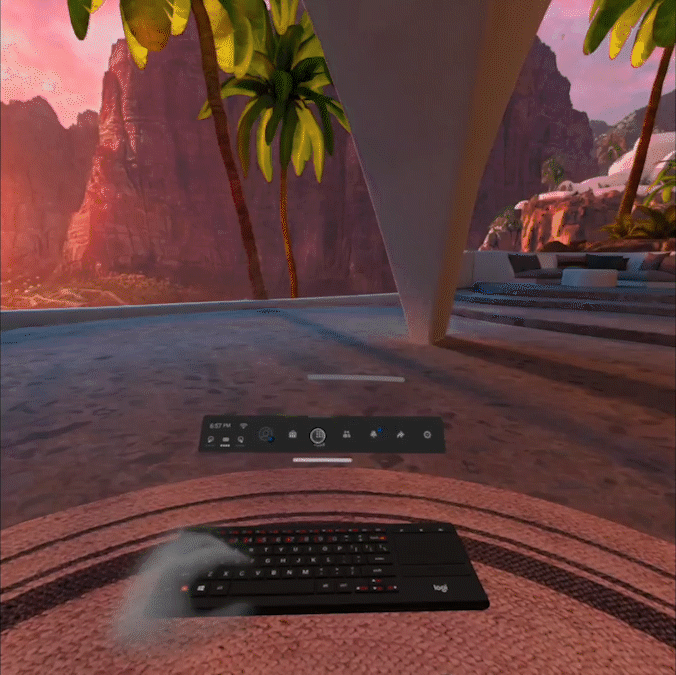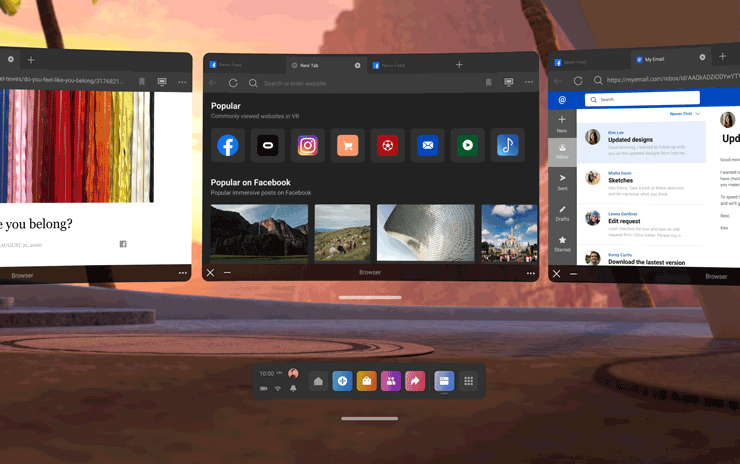Apple might not be interested in the “metaverse” just yet, but that won’t stop its products from finding their way in.
Meta, the parent company to Facebook, is rolling out an update to its popular Oculus Quest 2 headset that adds support for Apple’s Magic Keyboard — making it so you can not only use the peripheral but also see a digital version of the keyboard overlayed atop the physical one.
Oculus had previously added this same level of support to one other keyboard: the Logitech K830. Using Bluetooth tracking tech, the Quest headset shows the device and an outline of your hands in the digital world so you can look at what you’re typing instead of tapping into a void.

To use the feature, you will need to update to v37, enable hand tracking within the Hands and Controllers settings menu, and connect the Magic Keyboard — Apple’s $US99 ($137) wireless Bluetooth keyboard — through the Experimental Features panel in the Settings. Oculus recommends placing the keyboard on a flat, light-coloured surface in a well-lit room so the sensors can accurately detect its position.
This might not benefit touch typists, but for everyone else, throwing out the Quest VR controllers for a visible keyboard can make it easier to navigate the Oculus menus or get work done in a virtual productivity app — if that’s your thing. This feature is only as good as the support it receives from devs, so Meta is releasing a Tracked Keyboard SDK that optimises apps for the two available keyboards.
Oculus plans to support more keyboards in the future, though the process is taking longer than expected. Andrew Bosworth, Facebook’s vice president of augmented and virtual reality, wrote in an Instagram AMA last year that he’d like to add support for all keyboards, but that it has “proven a lot harder than we expected it to.”
Also arriving in the v37 update is a link-sharing feature for Android users. Those who own a phone running Google’s mobile OS can quickly share links from their phone to their headset using the Oculus mobile app. It’s as simple as opening a website, clicking “Share,” and choosing the Oculus app in the pop-up. The link will automatically open in a browser once you’ve selected your headset. Oculus says it will bring the feature to iOS “in the near future.”

The other major changes in v37 are designed to make it easier to navigate digital interfaces. You can now drop your controllers and use hand gestures to get to actions within the Quick Action menu. For example, holding your palm up then pinching will pull up a shortcut menu where you can take screenshots or turn on voice commands.

Windows are also getting overhauled, and now Oculus is giving users a choice between Tablet or Desktop mode, where the former displays a single 2D panel in a close-up window while the latter opens multiple panels further away. These panels will always open in the same orientation depending on which mode is enabled.
Oculus is also tweaking the Explore page — the interface you first see at startup — with recommendations for new games, apps, and videos, which will live alongside a new Fitness and Productivity section.
Editor’s Note: Release dates within this article are based in the U.S., but will be updated with local Australian dates as soon as we know more.
